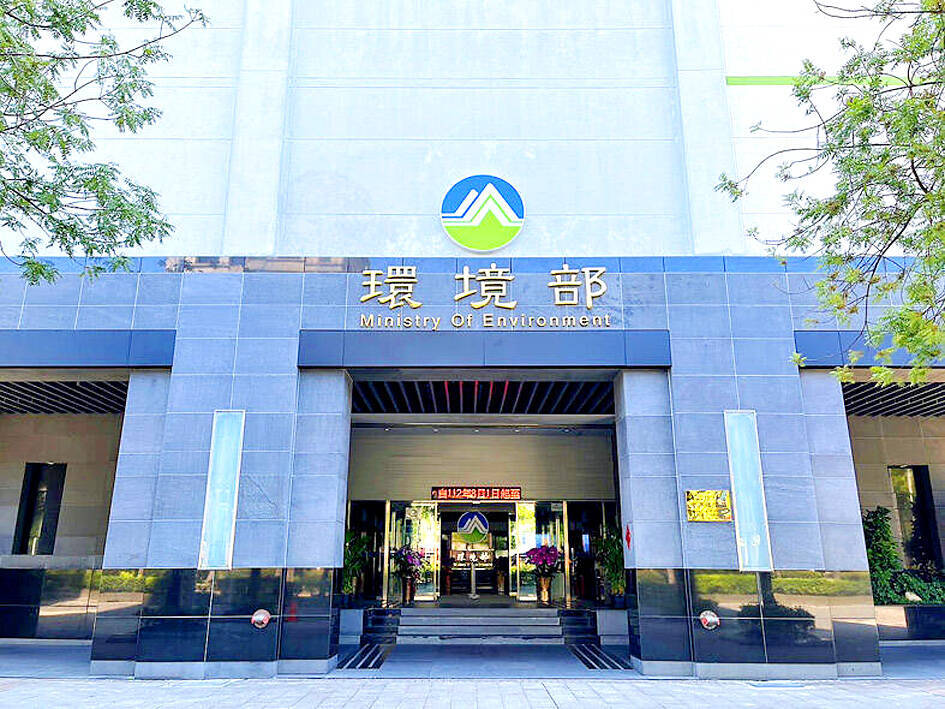work together:
Taiwan and Japan have opportunities to cooperate in carbon capture and storage development, given the two’s geographical similarities, an expert said
By Esme Yeh / Staff reporter
A draft bill for carbon storage management would be announced next month at the earliest, aiming to store 6 million tonnes of carbon by 2035, the Ministry of Environment said.
The ministry on Wednesday held a Carbon Capture and Storage (CCS) International Conference, inviting Japanese and local experts to exchange research and experience in the development of national CCS strategies.
CCS is a critical technique for Taiwan to achieve net zero emissions by 2050, Deputy Minister of Environment Hsieh Yein-rui (謝燕儒) said.

Photo: Chen Chia-yi, Taipei Times
In line with the carbon reduction goal of 38 percent — plus or minus 2 percent — announced by President William Lai (賴清德) this year, the ministry aims to remove 6 million tonnes of carbon dioxide via CCS by 2035, he said.
“As Japan is in an earthquake belt like Taiwan, its legal infrastructure, technological development and public communication are exemplary for us,” Hsieh said.
The number of developing CCS projects across the world rose by 60 percent to 628 last year, of which 50 facilities were in operation, 44 were under construction and 534 were being planned, he said, citing data from the Global CCS Institute.
Climate Change Administration Director-General Tsai Ling-yi (蔡玲儀) said that the bill on carbon storage management is expected to be announced next month.
Given capturing, delivering and storing carbon dioxide is expensive, innovating technologies to reduce its costs has finally caught international attention, she said, adding that interagency cooperation is indispensable to developing a CCS industrial chain.
Japan-Taiwan Exchange Association Taipei Office Deputy Representative Gen Kawai said that Japan unveiled its long-term CCS roadmap on March 2023, which outlined its goal of reaching an annual carbon storage capacity of 6 million to 12 million tonnes by 2030.
“The carbon storage potential of Japan’s coastal areas is estimated to be 150 billion to 240 billion tonnes,” he said.
To accelerate the development of CCS business models, the Japanese government promulgated the CCS Business Act in May last year, which stipulated a licensing system for carbon storage businesses and a notification system for carbon dioxide pipeline transportation businesses, Kawai said.
Japan also selected nine advanced CCS projects that include carbon capture, delivery and storage to create a CCS value chain, he said.
For example, the Tomakomai Area CCS project in Hokkaido reached a carbon storage of 300,000 tonnes in 2019, Kawai said.
Taiwan and Japan are surrounded by water, and their geographical similarities are expected to provide more opportunities for exchange and cooperation between the two sides in CCS development, he said, adding that the association would continue to offer support.
National Central University Carbon Storage and Geothermal Research Center director Lin Tien-shun (林殿順) said that the carbon storage potential of western Taiwan is estimated to be more than 40 billion tonnes.
Pilot test sites have been set up in areas with higher potential, including Taichung’s Tiezhenshan (鐵砧山) and Yunlin County’s Mailiao Township (麥寮), he said.
University of Tokyo engineering professor Takeshi Tsuji said that monitoring and management of carbon storage sites is important to ensure safety.
The University of Tokyo and National Taiwan University have been collaborating on developing a portable active seismic source device that could be used in monitoring storage sites, he said, adding that they were low-cost and environmentally friendly.
The small, handheld device could be used to continuously monitor the reservoirs at a depth of about 1km by generating seismic signals, Tsuji said.

AloJapan.com